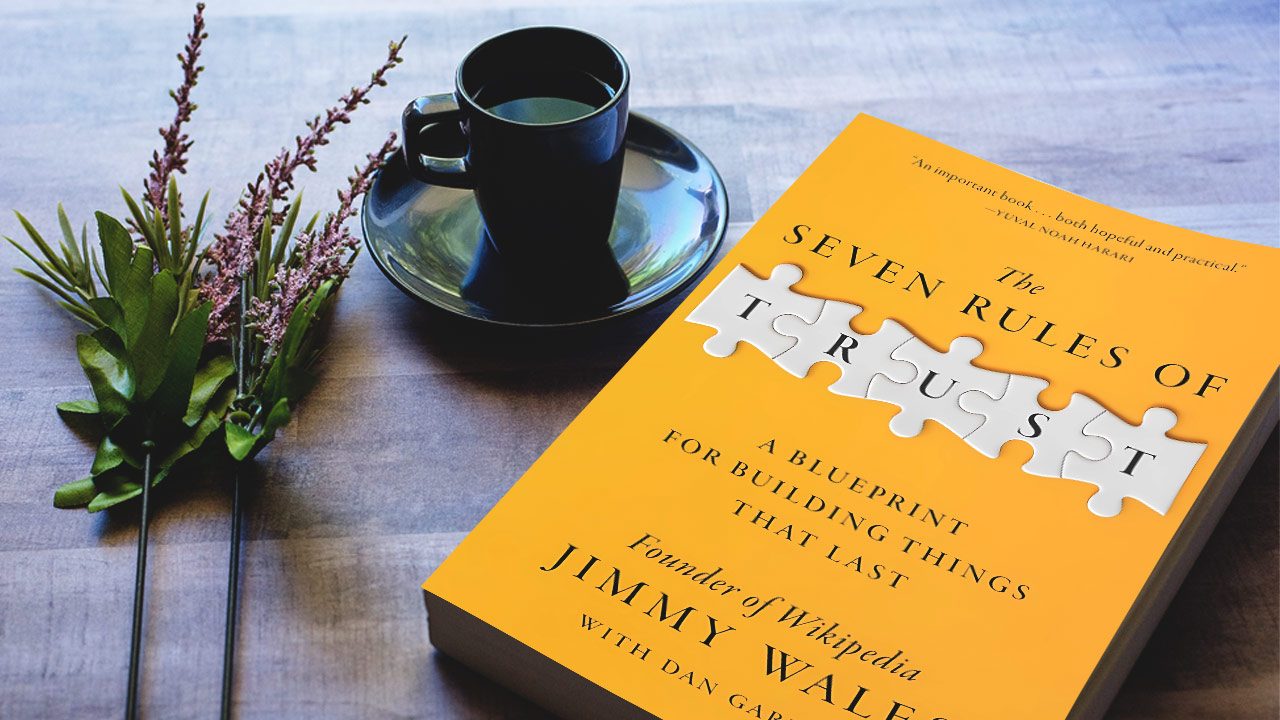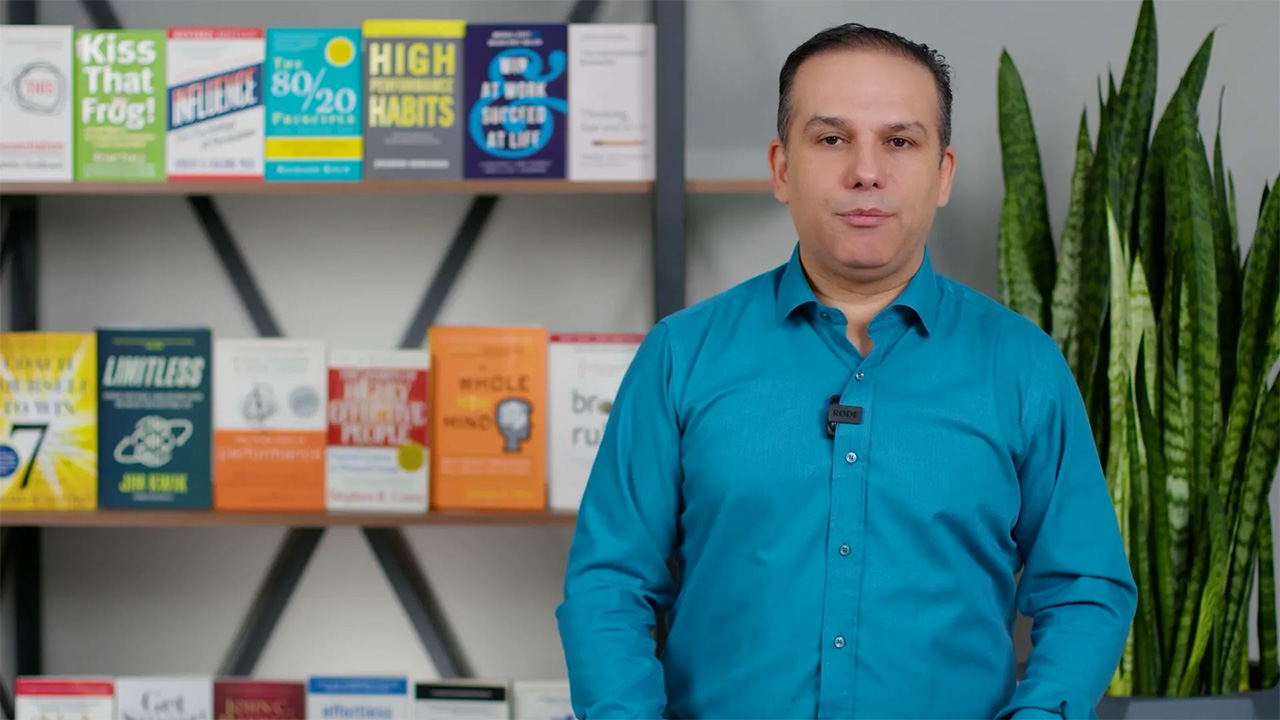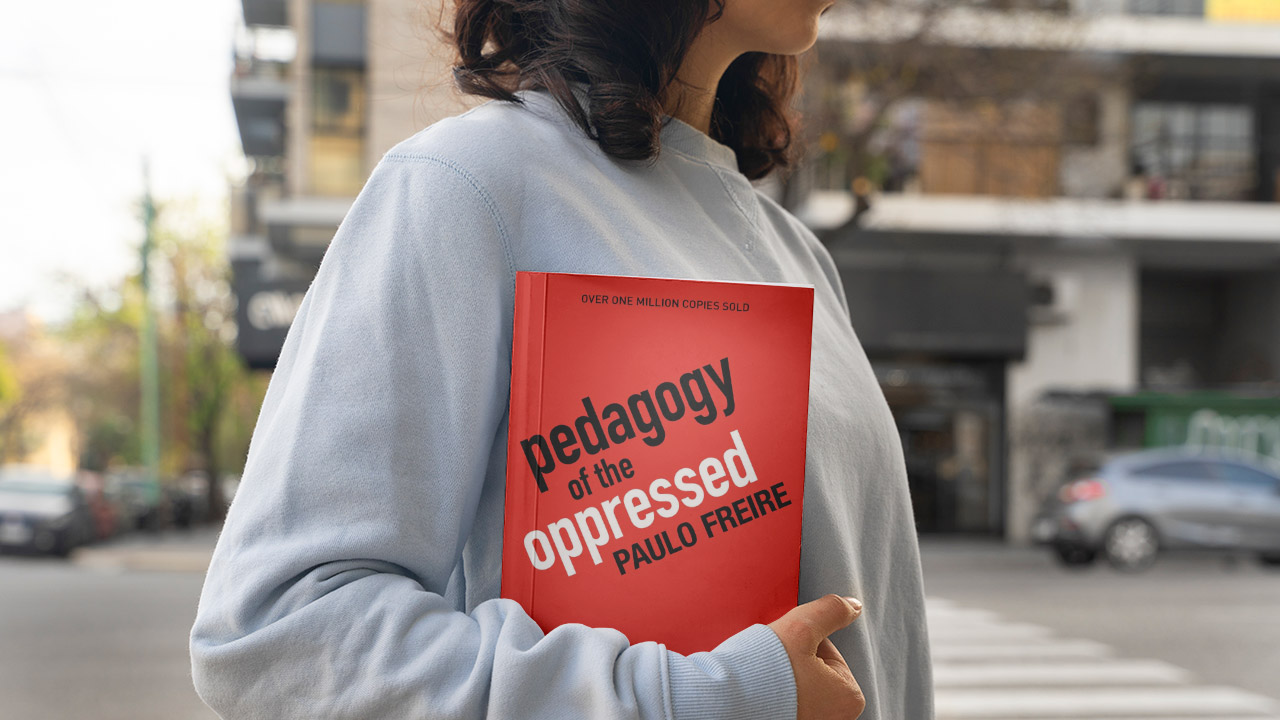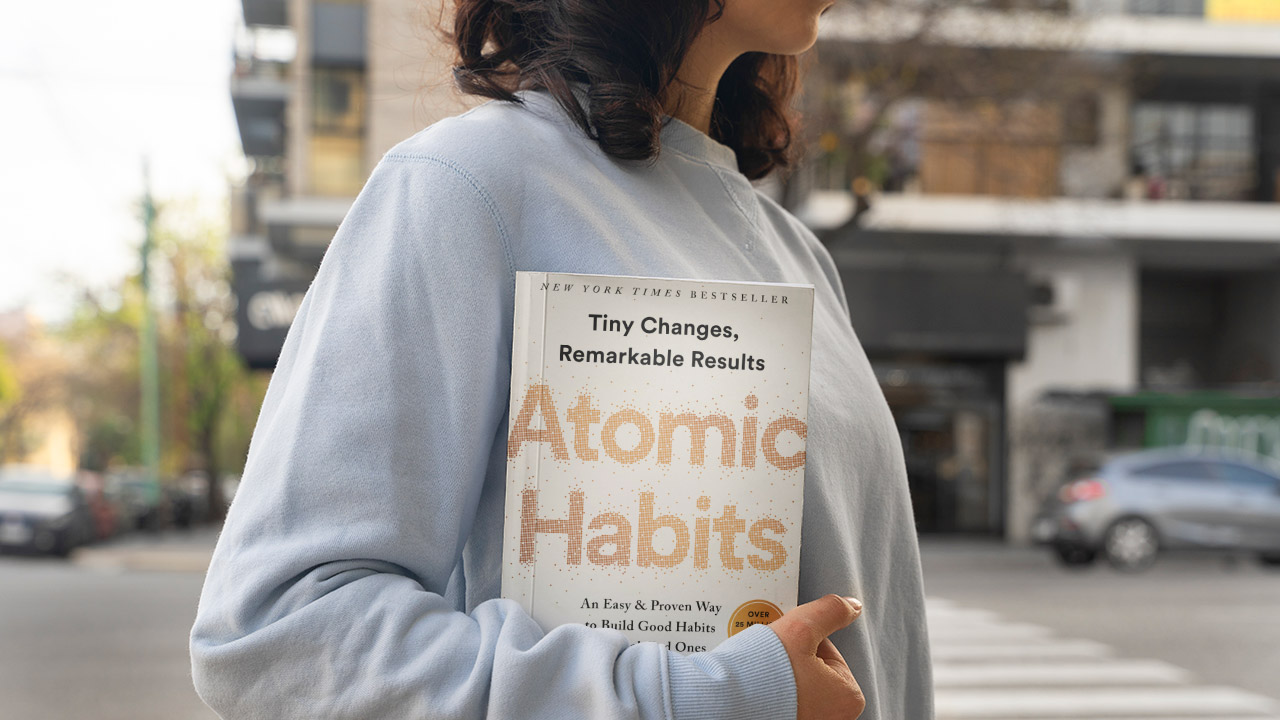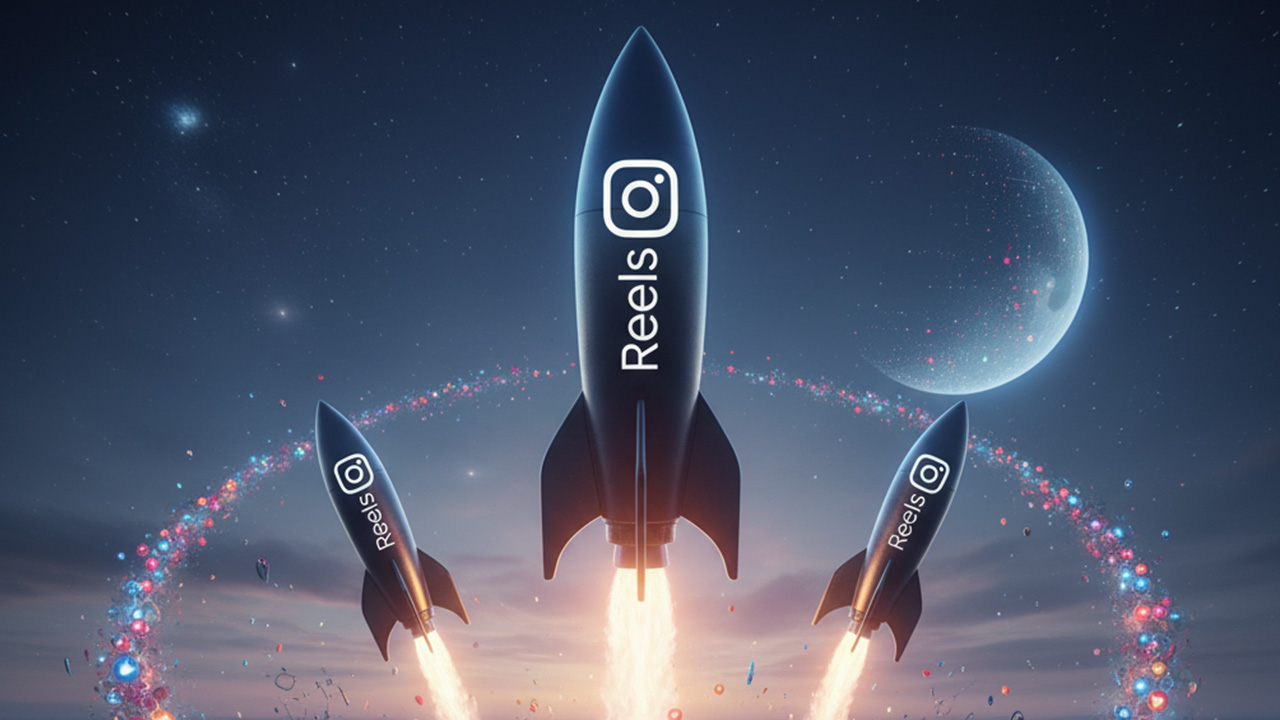Contents
- 1 Rule 1: Make It Personal
- 2 Rule 2: Work with Human Nature
- 3 Rule 3: Have a Clear, Strong Purpose
- 4 Rule 4: Give to Get (Want Trust? Give Trust.)
- 5 Rule 5: Your Mother Was Right (Practice Civility)
- 6 Rule 6: The Virtue of Independence
- 7 Rule 7: Be Clear as Glass
- 8 The Meta-Rule: The Bottom Line & A Brighter Future
- 9 About the Authors
From a Joke to Global Trust
The Seven Rules of Trust Book Summary written by Jimmy Wales emphasizes the critical role of trust in our interactions.
When Wikipedia launched in 2001, the premise—an encyclopedia that anyone could edit—seemed ridiculous, a joke. Critics predicted it would inevitably fail, becoming a wasteland of nonsense and vandalism. This skepticism was famously captured by comedian Stephen Colbert, who coined the term “Wikiality,” defining it as a “reality” where truth is determined by consensus, not fact.
The project faced severe credibility crises that threatened its existence. The most damaging was the John Seigenthaler affair, where an anonymous user falsely implicated the respected journalist in the Kennedy assassinations, a lie that remained on the site for 132 days. Critics compared using Wikipedia to visiting a “public restroom,” warning you never knew who used it last. Predictions of an inevitable “death spiral” were common.
And yet, Wikipedia survived. It didn’t just survive; it became a globally trusted institution, a core utility of the internet as reliable as electricity or water. We no longer think about its reliability; we just use it. This is the ultimate sign of trust.
This book explores how this seemingly impossible feat was accomplished, especially during an era of collapsing trust in other institutions. It argues that Wikipedia’s success was not an accident but the result of specific, replicable principles. These “rules of trust” are not unique to Wikipedia; they are the same principles that allowed other “impossible” ideas, like Airbnb and Uber, to convince millions of strangers to trust each other with their homes and their lives. This book codifies those rules.
Understanding The Seven Rules of Trust Book Summary is essential for anyone looking to build trust in their personal or professional life.
In this summary, we delve into The Seven Rules of Trust Book Summary to uncover the principles behind trust.
In examining The Seven Rules of Trust Book Summary, we can uncover valuable insights into how trust is established.
Rule 1: Make It Personal
The Seven Rules of Trust Book Summary teaches us that personal connections are vital for building trust.
(Trust is won and lost person to person. Always think of trust in these personal terms, no matter what scale you’re working at.)
The first rule is to understand that all trust, even organizational trust, is fundamentally personal. We judge institutions using the same ancient, person-to-person mental framework we evolved for one-on-one interactions.
This principle is a key takeaway from The Seven Rules of Trust Book Summary.
This framework is the “Triangle of Trust,” which states that trust is the product of three essential components:
1. Authenticity
Do your words, actions, and thoughts align? People trust you when they feel you are being genuine and not hiding a secret agenda.
The Seven Rules of Trust Book Summary illustrates how authenticity builds trust.
2. Empathy
Do you genuinely care about others and their interests? Empathy is the active demonstration that you have the other person’s well-being in mind.
3. Logic
Do you have the skills, competence, and judgment to deliver on your promises? Good intentions (authenticity and empathy) are useless without the ability to execute.
When all three are present, people perceive you as reliable.
The crisis at Uber serves as a perfect case study. After explosive growth, the company’s reputation collapsed, earning it the label of a “corporate goon” that had broken trust with its drivers, employees, and regulators. The solution was not a marketing campaign but an internal re-engineering based on this first rule. Uber’s leadership had to learn that trust was broken in small, personal ways—such as managers checking their phones during meetings, which signaled a profound lack of empathy. By re-focusing on rebuilding trust at the personal level, Uber was able to transform its culture and, ultimately, its business.
Rule 2: Work with Human Nature
(People are born to connect and collaborate. Work with human nature.)
The second rule, which is the foundational belief behind Wikipedia, is that humans are “pro-social” by nature. We are biologically wired to connect, collaborate, and form communities. In the optimistic early days of Web 2.0, this belief was celebrated. Time magazine named “You” its Person of the Year in 2006, heralding an era of community and “barn raising” on a scale never seen before. Wikipedia was built on this gung-ho optimism: the assumption that people want to contribute to something meaningful, even without extrinsic motivations like money or status.
So why did the internet also become a “hellscape”? Why did we get “barn burnings” like the Gamergate scandal, where mobs collaborated to harass and threaten individuals?
In The Seven Rules of Trust Book Summary, we learn how human nature plays a crucial role in collaboration.
This chapter explains that “pro-social” does not mean “inherently good.” Human nature is a neutral, powerful tool. Collaboration can be used for good or ill. The author provides the dark historical example of the lynching of Horace Maples, where a mob of thousands “cooperated” and “self-organized” to commit a horrific act of violence. They, too, were motivated by a shared (though evil) purpose.
The mistake of the early internet was not in believing that technology would connect us, but in failing to see that this same collaborative nature could turn dark. The difference between a “barn raising” (like Wikipedia) and a “barn burning” (like Gamergate) is not the nature of the people involved; it is the Purpose that directs their collaborative energy.
Rule 3: Have a Clear, Strong Purpose
(A strong, clear, positive purpose is essential for people to work together and make something wonderful.)
The Seven Rules of Trust Book Summary emphasizes the importance of having a clear purpose.
Following the second rule, the third rule explains how to channel that human nature for good. While Wikipedia had a grand, inspiring vision (“Imagine a world…”), the single most important statement for its success was a much more boring one: “Wikipedia is an encyclopedia.”
This simple declaration was critical because it tapped into a “shared mental model.” Everyone already knows what an encyclopedia is:
According to The Seven Rules of Trust Book Summary, clarity helps in effectively communicating purpose.
- It contains notable facts (like the Eiffel Tower, but not the individual welders who built it).
- It is written in a neutral, objective, “just the facts, ma’am” style.
- It does not contain jokes, opinions, or recipes.
While other online encyclopedia projects failed by trying to be too ambitious (“Let’s include everything!”), Wikipedia’s clear purpose made it easy for volunteers to join and contribute productively from day one. They didn’t have to debate the mission; they just had to execute it.
As highlighted in The Seven Rules of Trust Book Summary, a clear mission attracts collaborative efforts.
This purpose was enshrined as the First Pillar of Wikipedia, becoming the project’s “prime directive.” It created a culture obsessed with accuracy and verifiability, attracting people who shared those values. However, this rigid purpose was balanced by the Fifth Pillar: “Wikipedia has no firm rules.”
These two pillars worked together like a sailboat’s rudder and sail:
- The Purpose (Rudder): Kept the project steering in one consistent direction (being an encyclopedia).
- The Flexibility (Sail): Allowed the community to experiment, innovate, and evolve (e.g., dropping alphabetical order, which is useless online).
This combination of a fixed purpose and flexible methods allowed the community to build a shared identity (“Wikipedians”) and ultimately deliver on its promise.
Rule 4: Give to Get (Want Trust? Give Trust.)
The Seven Rules of Trust Book Summary shares how giving trust can initiate a positive feedback loop.
(Trust in the power of reciprocity. Want trust? Give trust.)
The fourth rule explains how to initiate trust, especially with strangers. The solution is counterintuitive: to get trust, you must give it first.
This is the “Quaker Principle.” The book details how Quaker merchants in the 17th and 18th centuries built an ironclad reputation for honesty. In an era defined by haggling (which is inherently dishonest), Quakers offered a single, fixed price. This was an act of giving trust; they trusted the customer not to take advantage of their honesty. In the long run, this reputation became their most valuable asset, creating brands like Cadbury and Barclays.
This principle works because it activates a powerful human instinct: Reciprocity.
The Airbnb Phone Experiment
In The Seven Rules of Trust Book Summary, the Airbnb example illustrates the power of vulnerability in fostering trust.
Co-founder Joe Gebbia demonstrated this in a TED talk. When he asked audience members to unlock their phones and hand them to the stranger on their left, it created two feelings: a “tiny sense of panic” for the giver and a powerful sense of “responsibility” for the holder. By making themselves vulnerable, the trust-giver inspires the receiver to be trustworthy.
Game Theory
This is the “Tit-for-Tat” strategy. Political scientist Robert Axelrod found the most effective strategy for cooperation is to always start by trusting the other person. You reciprocate their subsequent moves (cooperation or betrayal), but the first move must be trust.
Assume Good Faith (AGF)
The concept of AGF is a central theme in The Seven Rules of Trust Book Summary.
Wikipedia’s most famous policy is the direct implementation of this rule: “Assume Good Faith” (AGF).
AGF is not a naive suggestion; it is a mandatory starting position. It instructs editors to assume that even a bad edit was made with good intentions (e.g., ignorance, not malice). By separating the action from the person’s motive, AGF prevents the “assume bad faith” feedback loop that defines most toxic social media platforms. It’s the “start by trusting” move that makes the entire collaborative system possible.
Rule 5: Your Mother Was Right (Practice Civility)
Practicing civility is highlighted in The Seven Rules of Trust Book Summary as essential for maintaining trust.
(We teach toddlers civility. Remember why. And practice what we preach.)
If “Assume Good Faith” is the first move, the fifth rule, Civility, is how you sustain trust during disagreement.
The internet is notoriously uncivil. The author notes that even early platforms like Usenet were “mostly blind men in fist fights.” Some, like Linux creator Linus Torvalds, have argued that “radical candor” (i.e., being rude and unfiltered) is more honest and productive. The book argues this is fundamentally wrong. Torvalds’s abusive culture famously drove away talent (especially women) and reduced diversity, which is fatal for “wisdom of the crowds.”
A project needs diverse perspectives (like the blind men touching different parts of the elephant) to see the whole truth. An uncivil environment ensures only one type of person remains.
Civility is not about avoiding disagreement; it’s about separating the argument from the person.
- Every conversation has two channels: the Content Channel (the topic being debated) and the Relationship Channel (“Do you respect me?”).
- If you attack the person (an ad hominem attack), the Relationship Channel breaks. The other person feels disrespected and stops listening to the Content Channel, no matter how logical your argument is.
Wikipedia and the subreddit (a platform for civil, productive debates on explosive topics) prove that civility is a tool for better outcomes.
The Seven Rules of Trust Book Summary underscores the importance of respect in discussions to maintain trust.
- In Wikipedia, Civility is the Fourth Pillar. It’s not just a suggestion; it’s a rule enforced with social norms (like “Barnstars” for good work) and, as a last resort, warnings and blocks.
- The payoff is immense. The “Kena effect” tells the story of Emily Temple-Wood, a 10-year-old girl who vandalized Wikipedia. An editor responded to her with civility instead of abuse. Feeling bad, she returned years later and became one of the site’s most prolific editors, co-founding the “WikiProject Women Scientists” to fix gender bias—all because one person chose civility.
Rule 6: The Virtue of Independence
(You have a mission. Stick to it. And don’t take sides in the disputes of others pursuing their own missions.)
The sixth rule is essential for maintaining trust with a diverse public: Independence. Trust requires confidence that you are serving your single, stated purpose, not a second, hidden agenda. The moment you take sides in a dispute, you create a second purpose (supporting your side), which competes with your first, thus eroding trust.
Independence, as discussed in The Seven Rules of Trust Book Summary, is key to sustaining public trust.
The Washington Post Fiasco
The author argues Jeff Bezos was correct in the principle of ending political endorsements to boost trust, but his execution was a disaster. By waiting until two weeks before the election to kill the endorsement, his action wasn’t perceived as principled independence, but as a “cowardly” act of self-interest to protect his business interests (like Blue Origin) from potential political blowback.
The Cost of Taking Sides
Research shows that when apolitical organizations (like corporations or even Park Rangers) take a political stand, they don’t just lose the trust of the “other side”; they often lose the trust of “their own side” as well. People trust Park Rangers to be Park Rangers; they don’t trust them to be political actors.
Wikipedia’s NPOV
Wikipedia’s Neutral Point of View (NPOV) (the Second Pillar) is the core mechanism for this independence. NPOV does not mean giving “false balance” to fringe views (e.g., Holocaust denial or Flat Earth). The system is built on Reliable Sources (RS).
Wikipedia’s NPOV, as described in The Seven Rules of Trust Book Summary, exemplifies independence in action.
-
- If all reliable sources agree (e.g., the Earth is round), Wikipedia states it as fact.
- If reliable sources disagree (e.g., on the effectiveness of mammograms), Wikipedia does not take a side. It simply reports the disagreement, stating “Source A says this, and Source B says that.”
Ultimately, NPOV is an act of trust in the reader. As one Ukrainian editor put it, he trusts that “the true, neutral facts are still on the side of Ukraine.” He doesn’t need to push a narrative; he trusts the reader to see the facts and come to their own conclusion.
Rule 7: Be Clear as Glass
(Transparency builds trust, especially when you have something to hide.)
Radical transparency, a critical point in The Seven Rules of Trust Book Summary, builds trust in organizations.
The seventh rule is Radical Transparency. While we fear that revealing negative information will hurt us, the opposite is true. Admitting flaws builds credibility.
This works because of a legal concept called “Statement Against Interest.” A court normally dismisses hearsay, unless the statement is clearly harmful to the person who said it. Why? Because the court figures, “No one would lie against their own interest; it must be true.”
Real-World Examples
This is used constantly in advertising (Buckley’s cough syrup: “It tastes awful. And it works.” or the VW Beetle: “It’s ugly, but it gets you there.“). By admitting a flaw, the positive claim becomes more credible. Warren Buffett does this by starting his annual reports with a discussion of his mistakes.
Wikipedia’s Radical Transparency
Wikipedia is perhaps the most transparent organization on Earth. It doesn’t hide its flaws; it “flags” them. Any editor can add a banner to an article stating: “This article’s factual accuracy is disputed” or “The neutrality of this article is disputed.” By publicly flagging its own worst content, Wikipedia tells the reader, “We aren’t perfect, but we are honest about it,” which builds far more trust than pretending to be flawless.
The Airbnb Crisis
The Airbnb crisis story in The Seven Rules of Trust Book Summary teaches us valuable lessons in trust recovery.
In 2011, a host’s apartment was completely destroyed by a guest. The company’s first reaction was the standard corporate/legal one: Silence. This was a disaster and trust was collapsing. CEO Brian Chesky finally ignored his lawyers and followed Rule 7. He published a blog post that began: “We have really screwed things up.” This “statement against interest” (Authenticity) was followed by empathy and, crucially, Logic (Rule 1). The company halted everything to innovate on safety, launching identity verification and the $1 Million Host Guarantee. The crisis that could have killed them became their defining moment of trust-building.
The Meta-Rule: The Bottom Line & A Brighter Future
The book concludes by tying all seven rules together with one Meta-Rule: You must do exactly what it says on the tin. You can be personal, civil, and transparent, but if your product doesn’t work, none of it matters. The 2005 Nature study proved Wikipedia worked—it was “surprisingly accurate,” nearly as good as Britannica.
But billions trust Wikipedia without having read that study. Why? Because trust scales through a paradox:
The Seven Rules of Trust Book Summary reveals that reputation is a vital currency in the trust economy.
1. Do Things That Don’t Scale
First, you must win over a small group with personal, “non-scalable” actions (like the Airbnb founders personally taking photos for their first 100 hosts).
2. Reputation & Social Proof
This small group of “lovers” creates Reputation (word of mouth). That reputation eventually becomes Social Proof, where the product (like Uber or the automatic elevator) becomes so familiar and reliable that it’s just a normal part of life.
The final chapter is a warning and a call to action. The murder of Jo Cox, a UK politician who championed common ground, by an extremist who saw her as an “enemy,” is a symptom of a global trust crisis. This crisis is fueled by the “assume bad faith” architecture of social media, which optimizes for outrage.
Rules of trust to society
Applying the principles from The Seven Rules of Trust Book Summary can help address societal trust issues.
To fight this, we must apply the rules of trust to society:
1. Take a “Trust Inventory”: Understand what trust you’re taking for granted before it’s gone (like health officials lying about masks during COVID, destroying public trust).
2. Find “More in Common”: Use “Social Contact Theory” (like Wikipedia does) to bring opposing tribes together on a common goal.
3. Use Tech for Consensus: Follow Audrey Tang‘s work in Taiwan, using technology to find consensus, not just conflict.
4. Give Trust: The final, most important act. You don’t need to be a government. Like the first Wikipedia editors, you can choose to assume good faith in your daily life.
The book ends by reminding us that Wikipedia itself was a “ridiculous, joke” idea in 2001. The cynical world of today would have rejected it even more harshly. But it worked. The question is, which “crazy idea” will we have the courage to trust next?
The Seven Rules of Trust Book Summary ends with a call to action to reimagine trust in our world.
About the Authors
The Seven Rules of Trust Book Summary serves as a guide for anyone looking to deepen their understanding of trust.
Dan Gardner
Dan Gardner is a Canadian journalist, author, and political advisor. A former columnist for the Ottawa Citizen and editor of Policy Options magazine, he has also served as a senior advisor in the office of the Prime Minister of Canada. He holds degrees in law and history and is an Honorary Senior Fellow at the University of Ottawa’s Graduate School of Public Policy and International Affairs.
Jimmy Donal Wales
Jimmy Donal Wales, or Jimbo Wales, is an American internet entrepreneur and a central figure in the “Free Knowledge” movement. He is best known as the co-founder of Wikipedia, the free, non-profit encyclopedia, and Fandom (formerly Wikia). With a background in finance, he launched Wikipedia in 2001. In this book, he translates the lessons learned from this unique experience into a set of practical rules about trust in the digital age.

